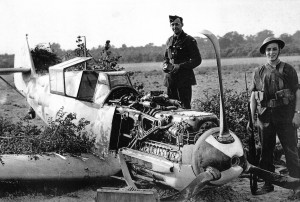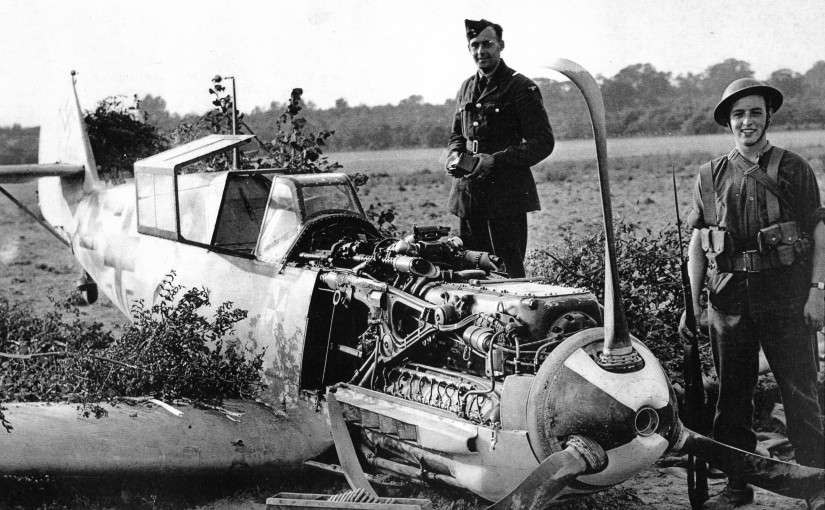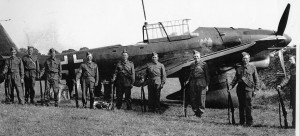Two aircraft stand motionless in the corner of a field near Brenzett round-a-bout. All who pass that way cannot have failed to have seen them. What message have these two relics of a past era got for the young people of today’s modern World?

Take a closer look and it can be seen they are announcing a unique Aeronautical Museum containing the remains of slightly earlier aeroplanes that crashed on the marshes during the Battle of Britain and later World War Two air clashes in the skies above Kent and Sussex.
Time passes and soon there will be few left who were alive at the time of Hitler’s War, but the Brenzett Museum will survive to enlighten those in the years to come about the sacrifice of the airmen of the Royal Air Force in the conflict that raged above the heads of those living in this area.
In that hot July of 1940 many watched from the lookout on Hilder’s Cliff as Stuka Dive Bombers hurled themselves down on the Home Chain Radar Station at RAF Rye (three large pylon aerials and seven smaller ones with operations hut beneath) at Kent Ditch Corner. The frightening screaming of the planes and crashing of bombs could be heard clearly in Rye. When the dust had settled all ten aerials still stood but the control hut was hit and one airwoman killed. This heralded the start proper of the Battle of Britain which built up and up over the coming weeks, with larger and larger formations of German bombers and fighter protection groups being seen in the blue skies of the long, hot summer. It all came to a climax on Sunday 15 September when the Germans made their mightiest effort yet, with wave after wave crossing the coast and heading for London. Still the British Spitfires and Hurricanes met every attack.

This was the day that Prime Minister Winston Churchill visited the RAF Command Post at Northolt where the raids were plotted from information coming from RAF Rye and all the other radar stations, listening posts and spotter positions dotted round the coast and inland towards London. “What reserves have we?” the Prime Minister asked of Group Captain Parks. “None” was the alarming reply. Every squadron was airborne. Slowly the plots on the map began to decrease as raiders were turned back or shot down. Some got through to London and were dealt with over the City.
From this day the raids began to slacken and Hitler realised that he could not gain control of the air, without this, the invasion of Britain would be impossible and he aborted ‘Operation Sea Lion.’ The troops and barges to carry them, massed in and around the harbours on the French Coast, were stood down.
“Never in the field of human conflict was so much owed by so many to so few” Churchill’s immortal words, resounded round the House of Commons and among the people of Britain.
The debt we owe lives on in the tangled wreckage and items retrieved from crash sites now on show in the Brenzett Museum. It is unique because the skies above this spot was the place so many airmen fought and died. It is fitting they are remembered here.
The Brenzett site itself became an airstrip in 1943. It was first used by Spitfires of 122 Squadron, probably including surviving pilots from the Battle of Britain. It became known locally as the Ivychurch Airstrip. Later in the War it was used by two Polish Squadrons who were allocated the tough task of destroying Flying Bombs.
The Museum was started in 1972, in a building that in wartime housed the local Women’s Land Army, a section of the exhibits make up a display about the WLA and the work they did on local farms while a battle raged above their heads. Other attractions include one of the largest collections of Bomb Disposal Equipment in the United Kingdom. There is a Link Trainer and Spitfire engine and many other interesting features that are well worth scrutiny.
Rye’s Own March 2009

